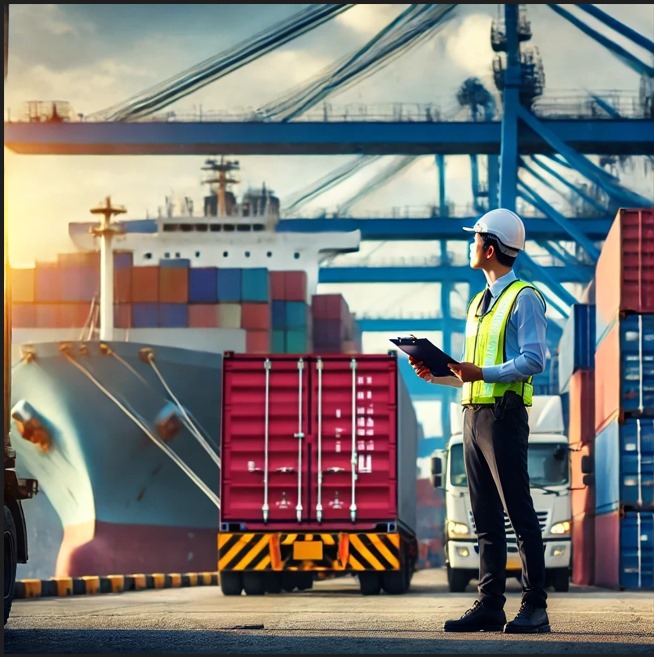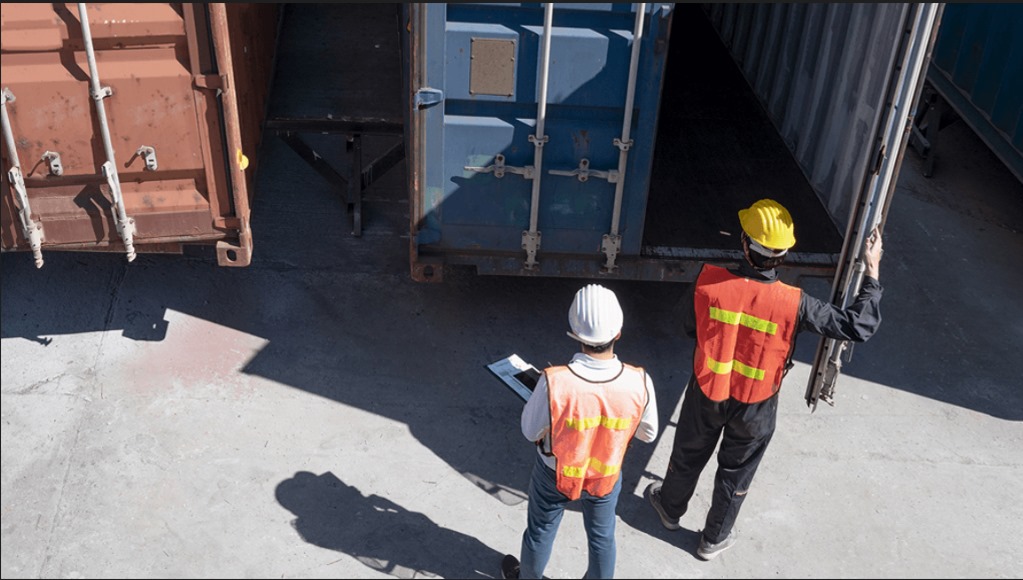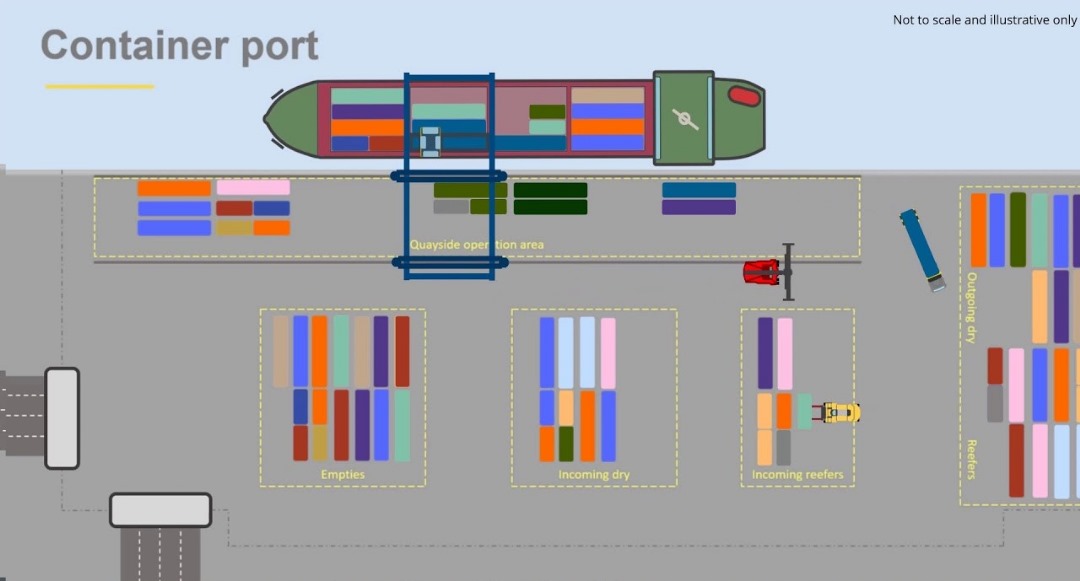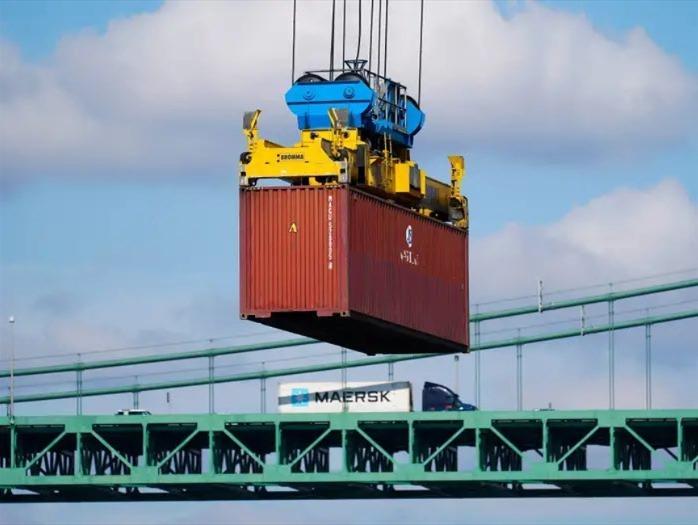Upon the containers arriving at the port for shipping, they undergo a series of essential procedures to ensure their safe and efficient preparation for sea shipment. These procedures include inspection, documentation, temporary storage, and finally, loading the containers onto the ship. In this blog, we outline the key steps that a container goes through from its arrival at the port to its loading onto the vessel.
1. Inspection and Documentation
When the container arrives at the port by truck, it goes through a series of steps to ensure proper handling, compliance with port regulations, and seamless integration with the port's logistics system. This process typically includes the following procedures:

1.1 Documentation and Pre-Arrival Notification
- Electronic Submission: The freight forwarder usually submits the container’s documents electronically to the port authorities. This occurs before the truck driver arrives. These documents include the bill of lading, cargo manifest, and customs clearance.
- Appointment System: Some ports require trucks to have an appointment for delivering or picking up containers to reduce congestion. The truck driver will book this slot through the port’s terminal operating system (TOS).
1.2 Arrival at the Gate
- Security Checkpoint: The first step for the truck upon arrival is passing through the security gate at the terminal. Security personnel may verify the driver’s identity, check the paperwork, and inspect the truck for any obvious irregularities or tampering.
- Automated Gate System (AGS): Many modern ports use AGS to streamline the process. These systems rely on technologies such as Radio Frequency Identification (RFID), license plate recognition, and Optical Character Recognition (OCR) to automatically verify truck details and match them with the container's documentation.
1.3 Verification and Documentation Check
- Customs Clearance: If not already cleared, customs authorities may check the container’s paperwork to ensure it has the necessary clearance for entry or export. If the container hasn't been cleared, it may be directed to an inspection or holding area until customs approval is obtained.
- Weight Verification (VGM): The Verified Gross Mass (VGM) of the container must be provided as required by the International Maritime Organization’s Safety of Life at Sea (SOLAS) convention. Some ports have automated weighing stations to verify the container's weight to ensure compliance with safety regulations and prevent vessel overloading.
1.4 Routing to the Yard or Inspection
- Instruction Issuance: Once the documentation and security checks are completed, the truck is given instructions on where to go within the port. This could be a specific container yard location for offloading.
- Inspection Process (If Required): If the container is flagged for inspection (by customs or security), it is directed to a designated inspection area. This could involve either a simple scan or a more detailed physical inspection depending on risk factors.
1.5 Updating Port and Terminal Systems
- Data Entry into TOS: The terminal operating system (TOS) is updated with the container’s new location in the yard, its status (awaiting vessel loading or further inspection), and any other relevant information.
- Real-Time Tracking: The container’s movement, inspection status, and storage location are updated in real-time in the port’s system. Some ports use RFID or GPS tracking to monitor containers more efficiently.
1.6 Exit Procedures (For Empty Trucks or After Unloading)
- Exit Gate Process: Once the container is unloaded and the port systems updated, the truck proceeds to the exit gate. Some ports have automatic gates equipped with sensors to verify the truck's exit and ensure that the required process has been completed.
- Payment and Documentation: In some cases, the driver may need to confirm payment for terminal handling charges or submit any necessary paperwork for the completed transaction before exiting the port.
1.7 Ongoing Monitoring and Communication:
- Port Community System (PCS): Throughout the process, the Port Community System is used to communicate with shipping lines, customs, freight forwarders, and other stakeholders to ensure smooth coordination and real-time updates on the container’s status.
2.Security and Customs Inspection
After documentation, a thorough security inspection is conducted on the container to ensure it contains no illegal or prohibited items. This step is usually random but may also be selected if there is a document error or missing information. If customs were to inspect every container, it would create chaos and bring the ports to a standstill:

2.1 Visual Inspection (If Required):
- Visual Inspection: If the container is flagged for inspection, it may undergo non-intrusive methods such as X-ray scanning or radiation detection. If these scans show any irregularities or further inspection is required, the container may then be subject to a manual, detailed inspection.
- Manual, Detailed Inspection: In some cases, customs or security personnel will open the container and manually inspect its contents. This may involve verifying the cargo against the manifest or checking for any smuggled or undeclared goods.
Important
Advanced X-ray machines are used to scan the container, and manual inspections may be conducted if suspicion arises. Containers undergo customs inspection to ensure compliance with legal requirements, which may also include verifying goods that require special permits such as medications or chemicals.
3. Temporary Storage
Once inspections are completed, the container is moved to the temporary storage area within the port. Containers are arranged based on several criteria. Continue reading for more details:

3.1 Unloading the Container:
- Positioning in the Yard: The truck proceeds to the assigned area in the port, often guided by a yard management system. The container is unloaded by specialized port equipment, such as rubber-tired gantry (RTG) cranes, reach stackers, or straddle carriers, depending on the layout and size of the port.
- Temporary Storage: The container is placed in the designated stack in the container yard (CY) based on factors such as its size (20, 40, or 45 feet), type (reefer, dry, dangerous goods, empty, etc.), and whether it is for export, import, or transshipment.
3.2 Waiting for Vessel Loading or Further Processing
- Export Container: If the container is for export, it remains in the yard until the designated vessel arrives. The port will use a stowage plan to determine when and where the container will be loaded onto the ship.
- Import Container: If the container is for import and has not yet undergone customs clearance, it will wait in the yard until cleared. Once cleared, it will be ready for pick-up by a truck for delivery to its final destination.
- Transshipment: Containers for transshipment (being transferred to another vessel) are temporarily stored before being reloaded onto another ship bound for their final destination.
4. Loading the Containers onto the Ship
When the vessel arrives at the port and is ready for loading, port cranes are used to lift the containers from the storage area and load them onto the ship. Containers are arranged on the vessel according to the ship's balance considerations, with heavy containers loaded first and lighter containers second. Let's take a detailed look at the organization of containers onboard:

4.1 Stowage Plan (Bay Plan)
- Balanced Stowage: The weight of transshipment containers, like all others, must be factored into the vessel's overall stability plan. Heavier containers are placed lower in the hold, while lighter ones are stowed higher up. The ship’s center of gravity and stability must be maintained throughout the journey, even as cargo is loaded or unloaded at various ports.
- Balance: Containers must be distributed in a way that ensures the ship's balance, with heavy containers placed at the bottom for stability, and lighter containers placed at the top.
4.2 Horizontal and Vertical Segmentation
- Decks: Containers are arranged across several decks, with the ship containing "towers" designated for placing containers above and below the deck.
- Bays: The ship is divided into several areas or "bays," which are spaces that determine where containers are placed horizontally and vertically.
4.3 Loading Based on the Port
- Phased Unloading: Containers to be unloaded at the first ports are placed on top or in easily accessible locations to minimize the need to rearrange containers at subsequent ports.
- Transshipment: If the container is destined for multiple ports, it is arranged so that the container for distant ports is at the bottom.
4.3.1 Types of Containers
- Reefers (Refrigerated Containers): Reefers require connection to power sources onboard, so they are placed in special locations with electrical outlets to maintain the proper temperature.
- Dangerous Goods: Specific locations on the ship are allocated for containers carrying hazardous materials, kept away from other containers to avoid any risks.
4.4 Securing the Cargo
- Twist Locks: Containers are locked together using twist locks, which secure the corners of the containers to the ship or to other containers above and below them. This prevents the containers from shifting or falling during rough seas.
- Lashing Bars: In addition to twist locks, containers are secured with lashing bars and turnbuckles to keep them stable, especially those stowed on deck. This provides extra security against movement during bad weather or rolling seas.
4.5 Technology Used
- Container Tracking: Each container is tracked with a unique identification number, which helps in knowing its exact location whether onboard or during unloading.
Conclusion
The primary goal of this procedure is to ensure safety, efficiency in operations, and the ability to unload and load containers in a timely and smooth manner upon arrival at various ports.
Preparing a Container for Maritime Shipping: Steps & Procedure